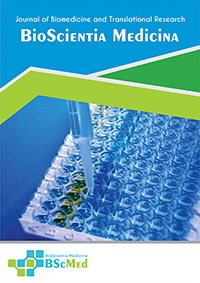Main Article Content
Abstract
Background: Reconstruction of the lower eyelid following oncologic surgery presents a formidable challenge due to the region's unique anatomy and functional importance. The primary goal is to restore the lamellar structure while avoiding ectropion, a complication with significant functional and aesthetic consequences. This report details the successful application of a rhomboid flap, a classic transposition flap, for a moderate-sized defect in this high-risk anatomical subunit.
Case presentation: A 75-year-old male farmer presented with a 2x1 cm nodular basal cell carcinoma on his left lower eyelid. After surgical excision with 4 mm margins, a superolaterally based rhomboid flap was designed to close the defect. The procedure was performed under local anesthesia. The postoperative course was uncomplicated. Objective functional assessment at 12 weeks confirmed a normal lower lid position with margin-to-reflex distance 2 (MRD2) symmetrical to the contralateral eye and no evidence of ectropion or lagophthalmos. The cosmetic outcome was assessed as favorable using the Patient and Observer Scar Assessment Scale (POSAS), and the patient reported high satisfaction (5/5 on a Likert scale).
Conclusion: This case report illustrates the successful use of a rhomboid flap for a moderate-sized lower eyelid defect, resulting in a favorable functional and aesthetic outcome without complications in the short-term follow-up period. The technique successfully restored tissue volume and preserved normal eyelid function, critically preventing ectropion. It supports the rhomboid flap as a robust and reliable option in the reconstructive surgeon's toolkit for this challenging anatomical area.
Keywords
Article Details
As our aim is to disseminate original research article, hence the publishing right is a necessary one. The publishing right is needed in order to reach the agreement between the author and publisher. As the journal is fully open access, the authors will sign an exclusive license agreement.
The authors have the right to:
- Share their article in the same ways permitted to third parties under the relevant user license.
- Retain copyright, patent, trademark and other intellectual property rights including research data.
- Proper attribution and credit for the published work.
For the open access article, the publisher is granted to the following right.
- The non-exclusive right to publish the article and grant right to others.
- For the published article, the publisher applied for the Creative Commons Attribution-NonCommercial-ShareAlike 4.0 International License.





